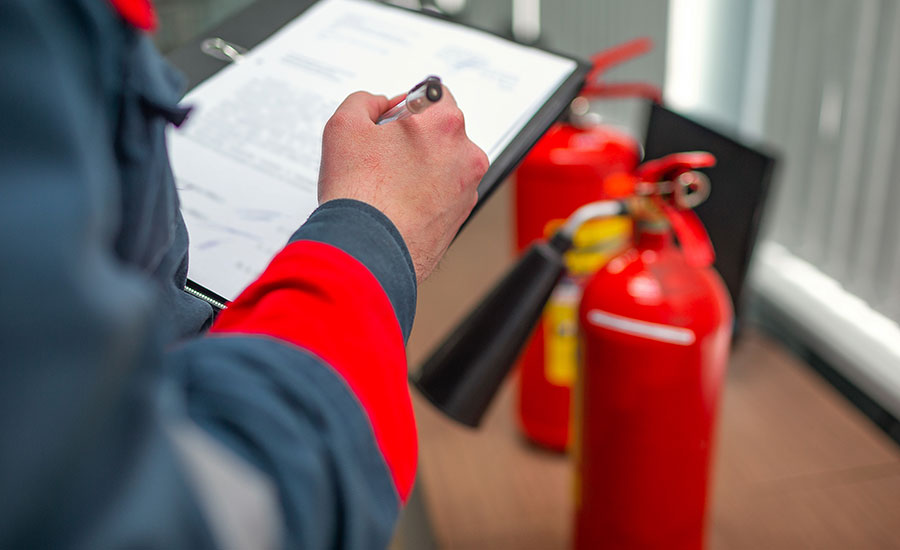
From replenishing products to ensuring your employees know the store’s refund policy by heart, a comprehensive retail store opening checklist is a key element in providing unparalleled customer service, improving brand loyalty and maintaining a positive brand image.
We’ll share what your retail store operations checklist should include from opening to closing. We’ll also explain how to simplify your checklist to improve security, cut costs and more using our mobile forms solution.
Table of Contents
Digitize your checklists
Try doForms for free!
What Is A Retail Store Operations Checklist?
A retail store daily checklist is a list of everyday tasks that your employees must complete at the start and end of their shift.
Employees can place a checkmark or their initials next to each task, as it’s completed.
This checklist ensures that employees are aligned with their day-to-day responsibilities, and each task is attended to as needed.
What Is A Retail Store Opening Checklist?
A retail store opening checklist is a key part of your retail store operations checklist.
An opening checklist outlines key steps that need to be completed to get the store ready to open each morning, from turning the lights on to unlocking dressing room doors, counting cash register money and more.

A retail store operations checklist ensures that employees are aligned with their responsibilities and goals for the day
What Should Your Retail Store Opening Checklist Include?
Here’s what your retail store opening checklist should include:
Security
Before you unlock the door, check for broken windows, unusual cars or people loitering around the area. Check for signs of a break-in, such as markings from a crowbar on the door or footprints throughout the entrance.
If you notice any of these scenarios, do not enter the store. Instead, get to a safe place and call the police.
If you do not see any signs of a break in, go ahead and open your retail store, marking off each point below.
- Turn on lights and background music
- Enter the store and lock the door after entering
- Turn off the security alarm
- Unlock the door to let staff members in as they arrive
- Ensure employees enter the store one at a time
- Make sure your staff clocks-in for their shift
- Make sure the alarm is working properly
- Ensure your surveillance cameras are working
Electronics
- Turn on your Point of Sale (POS) system
- Ensure your POS system is working and ready for the day by checking if the receipt printer, barcode scanner, and WiFi router are working properly
- Inspect your POS system for signs of tampering. Typical signs of tampering include odd cabling, broken seals over screws and access cover plates and new features you don’t recognize
- Enter your daily cash float
- Place your cash float into the register
- Enter the amount into your POS system
- Inspect your cash drawer, count the available cash and ensure enough change is ready for your customers
- Turn on your traffic tracking software and ensure it’s working
- Turn on your TV and sound system, computers, tablets and other gadgets
- Turn on your HVAC system and listen for loud or unusual noises. In New York, if noise exceeds 42 decibels, you can be fined up to $1,680. (Speaking of HVAC, get access to our comprehensive HVAC maintenance checklist here!)
- Turn on your electronic displays, such as digital window displays, wall-mounted digital signs and digital shelf displays
Internal Housekeeping
- Check for potential safety hazards such as spills on the floor, or wet spots on the walls and ceiling, which could be signs of heating, plumbing or cooling issues
- Check for signs of pests, such as droppings, nests, footprints or foul and unusual odor. If needed, call an exterminator to resolve the issue.
- Wipe and shine windows
- Sweep the floors
- Mop floors
- Clean and sanitize fitting rooms
- Ensure trash bins are empty
- Wipe or dust off products that are on display
Storefront Housekeeping
- Sweep the sidewalk
- Ensure your storefront is clear for customers to enter
- Remove snow and ice from the sidewalk during winter season
Merchandise
- Ensure you’re adhering to all local retail laws and regulations
- Make sure your window displays reflect the latest items you have in-store
- Ensure your refund policy is posted and visible
- Ensure your shelves and product displays are organized
- Dress your mannequins appropriately
- Showcase your items on hangers and shelves so they’re visible to customers
- Arrange your products in sizes, with the smallest sizes in the front and the largest in the back
- Ensure you clearly mark prices for your products
- Clearly label your on-sale and promotional products
- Steam or press your display products
- Perform cycle counting or regular checks on your inventory to avoid stockouts
Staff
- Ensure your employees have clocked-in properly
- Make sure your employees know the store’s panic or distress code
- Address an agenda for the team huddle
- Set goals for the day
- Review shifts and responsibilities of each staff member to ensure everyone knows their responsibilities
- Review staff performance from the previous day, including positive and negative customer feedback and sales results
- Review store policies, ongoing promotions, discounts and sales
Once you tick all the boxes from your opening checklist, you can change the door sign from “Closed” to “Open” and start welcoming customers.
Ready to build your retail store opening checklist?
Try doForms for free!
What Should Your Retail Store Closing Checklist Include?
“Attention shoppers, our store will be closing in 15 minutes!”
Near closing time? Make an announcement 10 to 15 minutes before it’s time to close, so your customers have enough time to wrap up and complete their purchase.
Here’s what your retail store closing checklist should include:
Closing The Store
- Change the door sign from “Open” to “Closed”
- Bring in outdoor signs
- Monitor leaving customers to ensure they’re not taking products that haven’t been paid for
- Ensure an employee is at the main door to allow last-minute customers and employees out
- Lock the doors
Electronics
- Settle credit card machines
- Count the remaining money from the register
- Turn off all electronics, including your POS system
- Store cash in a safe place
Housekeeping
- Inspect the bathrooms, dressing rooms and other areas of your retail store to ensure there are no remaining customers
- Wipe counters and mirrors clean
- Sweep the floors
- Mop the floors
- Clean all windows
- Empty trashcans and replace trash bags
- Ensure fitting rooms are clean
- Dust product displays
- Organize shelves and mannequin displays
Merchandise
- Check fitting rooms and the checkout counter for forgotten products
- Return products back to their designated shelves and hangers
- Place new arrivals in the appropriate spot
- Replace sold products with new stock
- Remove expensive items from window displays
Staff
- Discuss notable events or customer interactions with your team and explain what went right or wrong to improve customer service
- Note incomplete duties to discuss during your next team huddle the following day
- Ensure employees have clocked out properly
Security
- Switch off the lights
- Turn on the security alarm
- Lock the doors

A retail store opening checklist ensures that every step is taken to offer the best experience and services for your customers
Benefits Of A Retail Store Operations Checklist
A retail store operations checklist ensures that your business is ready and clean before customers start arriving, and is properly set up for when it’s time to close.
From performing security protocols to ensuring better communication between you and your employees, a retail store operations checklist helps you:
1. Improve Safety And Security
A recent survey by the National Retail Federation found that retail theft resulted in $94.5 billion in losses for retail stores in the United States in 2021.
So how do you ensure that your retail store is following industry standard security protocols? This is where a checklist comes in handy.
Retail store operations checklists include locking all doors before leaving, setting the alarms correctly and removing expensive items from window displays. With a retail store operations checklist, you ensure that your employees, retail store and products are safe.
2. Save Money
Retail store violations can lead to hefty fines.
For example, in New York City, failure to display a refund policy can result in a $500 fine alone. A retail store operations checklist helps ensure that your store is following city regulations, which saves you money and protects your brand reputation.
3. Streamline Customer Service
A retail store operations checklist allows your staff to provide consistent service.
From staying informed about active sales and discounts to dealing with customer complaints and feedback, customers can expect a positive, clean and satisfying experience every time they shop in your retail store.
4. Improve Communication Between Store Manager And Staff
A retail store operation checklist allows your staff to focus on their daily responsibilities, whether they’re part of the team who opens or closes up shop.
In addition, a retail store operations checklist reminds staff to keep track of issues and discuss daily goals and concerns.
Say goodbye to paper checklists when you
try doForms for free!
Digitize Your Retail Store Opening Checklist Using doForms
With doForms, your staff can ditch paper-based checklists and go digital instead.
Time-consuming, messy and costly, companies spend an average of $8,000 per year on paper alone!
This is where doForms comes in.
doForms is a mobile forms solution that moves your business towards a paperless and digital approach.
With an intuitive dashboard and more than 30 drag-and-drop features, our mobile forms solution is the most secure and efficient method for building, storing and sending checklists and reports for your retail store operations.
Need to take a picture of a potential safety hazard? With doForms, you can snap a picture, log the necessary details and submit it to management in real-time, all with a few taps.
If you don’t have time to create your checklist from scratch, you can choose from our library of extensive templated forms, which offer customization options as well, depending on your needs.
The best part? You don’t need an internet connection to access your documents. You can access your doForms even when offline!
Check out doForms in action below:
ARVE Error: src mismatchprovider: youtube
url: https://www.youtube.com/watch?v=lGlfl0wMe8A&t=2s
src in org: https://www.youtube-nocookie.com/embed/lGlfl0wMe8A?start=2&wmode=transparent&rel=0&feature=oembed
src in mod: https://www.youtube-nocookie.com/embed/lGlfl0wMe8A?start=2&wmode=transparent&rel=0
src gen org: https://www.youtube-nocookie.com/embed/lGlfl0wMe8A?start=2
In addition to streamlining retail store operations checklists, going digital allows you to:
- Manage payroll, inventory, timesheets and more — keeping all of your forms in one, secure location
- Manage your employees whether you’re onsite or on the go
- Communicate safety hazards, retail operations and staff issues in real-time. (Speaking of safety hazards, read our guide to creating near miss reports with doForms.)
- Manage inventory, sales and staff performance
- Edit templates and deliver employee payroll forms
- Gain access to employee schedules and time sheets at any time, regardless of the device you’re using
- Minimize the risk of sharing sensitive details, such as performance reviews, salaries, employee bonuses and payroll, thanks to features such as multi-factor authentication and data encryption through HIPAA compliancy





